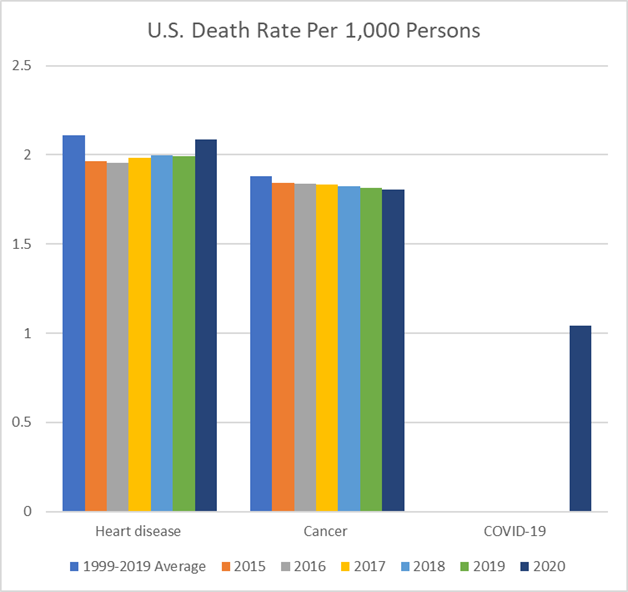AI and Data Science have a Rearview Mirror Problem | Part 2 – Healthcare
In Part 1, we discussed AI and data science problems with the travel industry. For Part 2, we share insight on the healthcare industry.
Consider the efforts to use AI and data science in health care. The U.S. “Crude Annual Death Rate” has varied over the last 25 years from a low of about 7.95 persons per thousand (2009) to about 10.1 in 2020. Roughly half the death rate is related to heart diseases and cancers, and nearly half is everything else. But the long-term trends are complicated.
AI and Data Science Healthcare Problems
Progress has been made in heart diseases, but the annual data is noisy, reflecting things like differences in flu seasons. Flu (or Covid) can push a fragile patient into a deadly decline. The 2020 uptick in heart failure and heart attacks are related to Covid, but we probably will never fully understand it. Some people didn’t get early treatment. Others had heart failure as Covid overloaded their body.
 In contrast, cancer progress has been reasonably steady. There are various ways to measure this decline at the national level. But roughly one-fourth of cancer patients survive today who would have died in 1999. Said another way, cancer death rates are down about 25% over the last 20 years.
In contrast, cancer progress has been reasonably steady. There are various ways to measure this decline at the national level. But roughly one-fourth of cancer patients survive today who would have died in 1999. Said another way, cancer death rates are down about 25% over the last 20 years.
From a data science perspective, this is vexing. We want to tell patients what their survival chances are and how those vary with different treatment options. But the treatments of 2021 are not the options of 1999.
To make things more complicated, we have only one year of COVID-19 data, and there have been dramatic changes in treatments over the past year or so. Early in the American experience, ventilators were in high demand. By April 2020, physicians were rethinking how and when they wanted to put a patient “on the vent.” In January, we started administering vaccinations.
So, how much insight does that historical data provide? It depends. We have long argued that “you can’t read the other guy’s numbers.” But this is a confounding problem. Even if you could grasp the meaning of conflicting data definitions, the current truth is changing, so looking backward is a problem.
The rate of change determines the value of mainstream data science and AI. In highly dynamic applications, we need something better.
